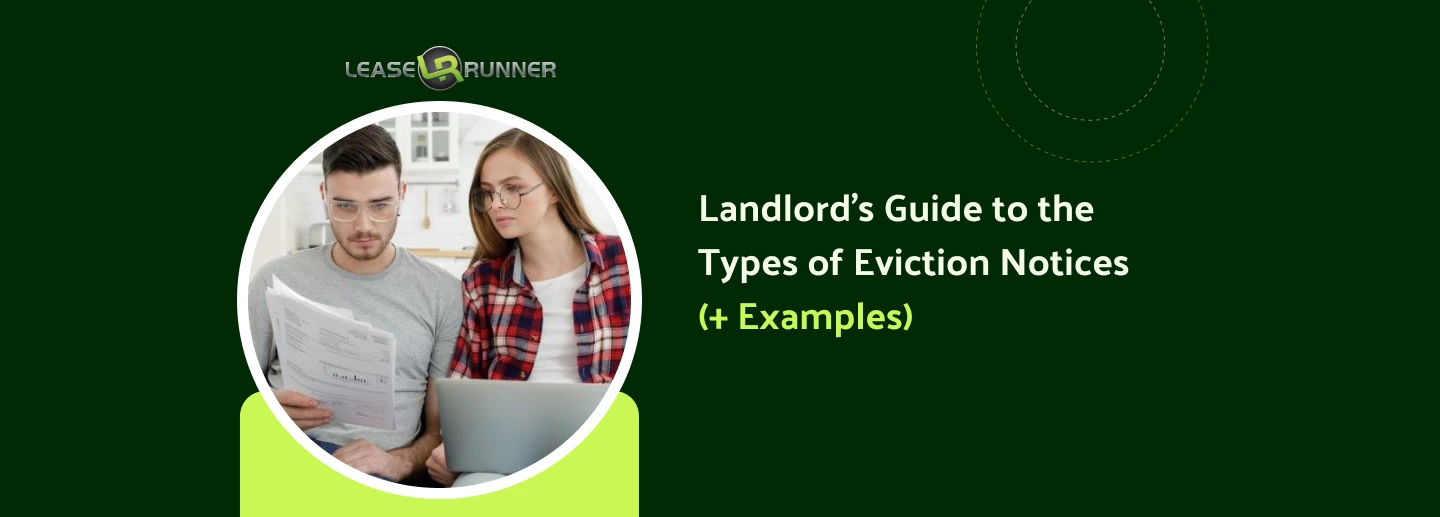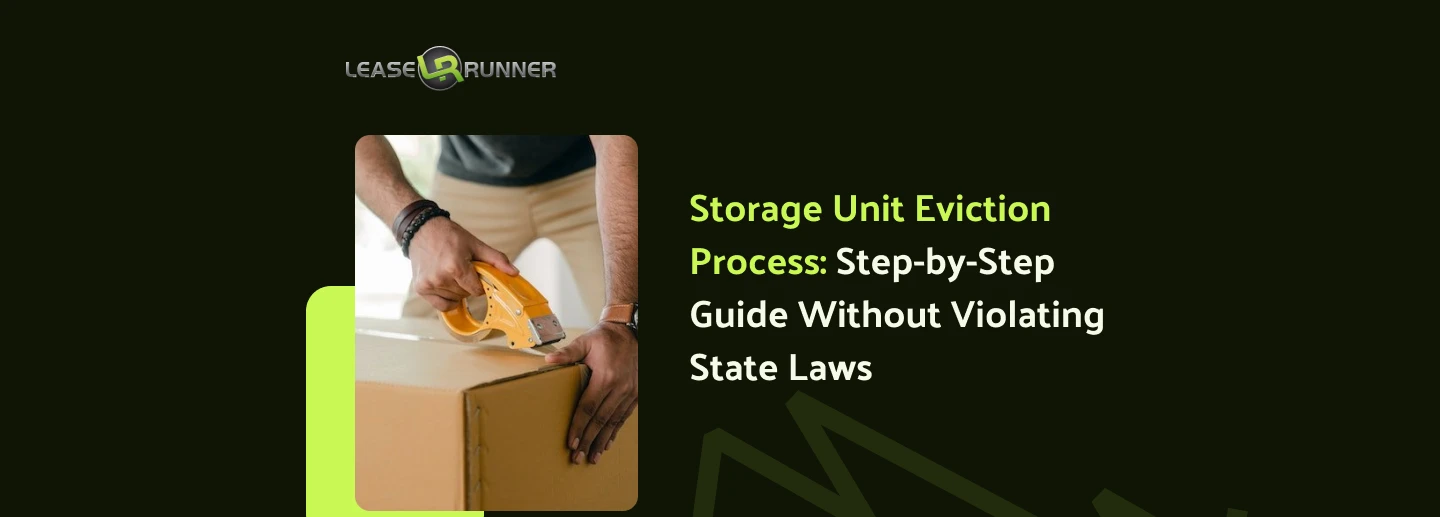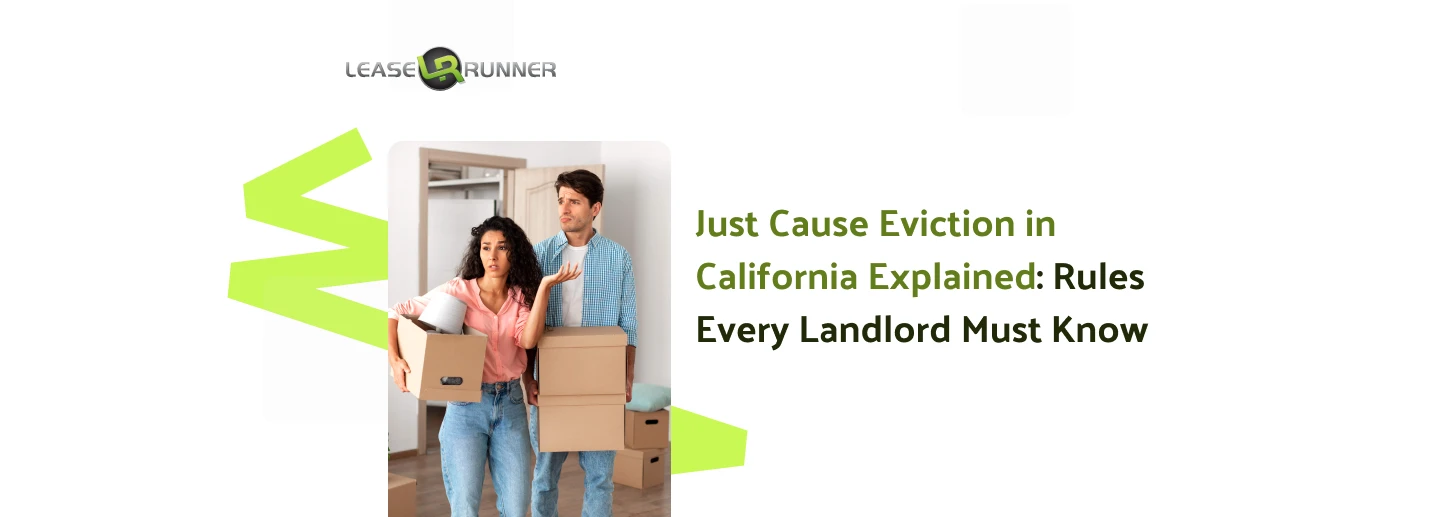Evictions are never fun, but they’re sometimes necessary to protect your property and income. Knowing the correct types of eviction notices to use can help keep things clear, legal, and less stressful. In this guide, we explain each type in plain language, so you can handle tough situations with confidence.
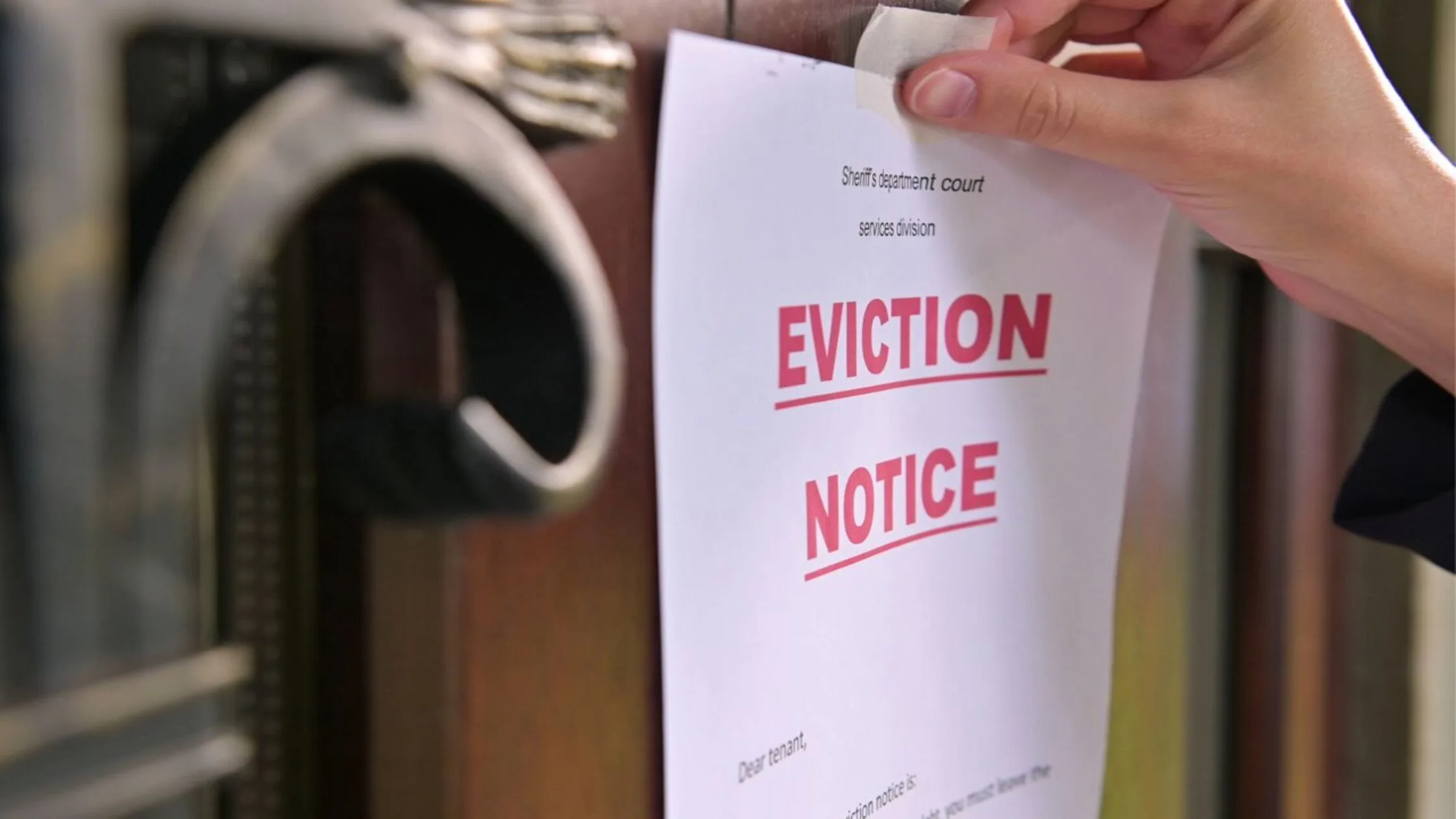
An Overview of Eviction Notice for Landlords
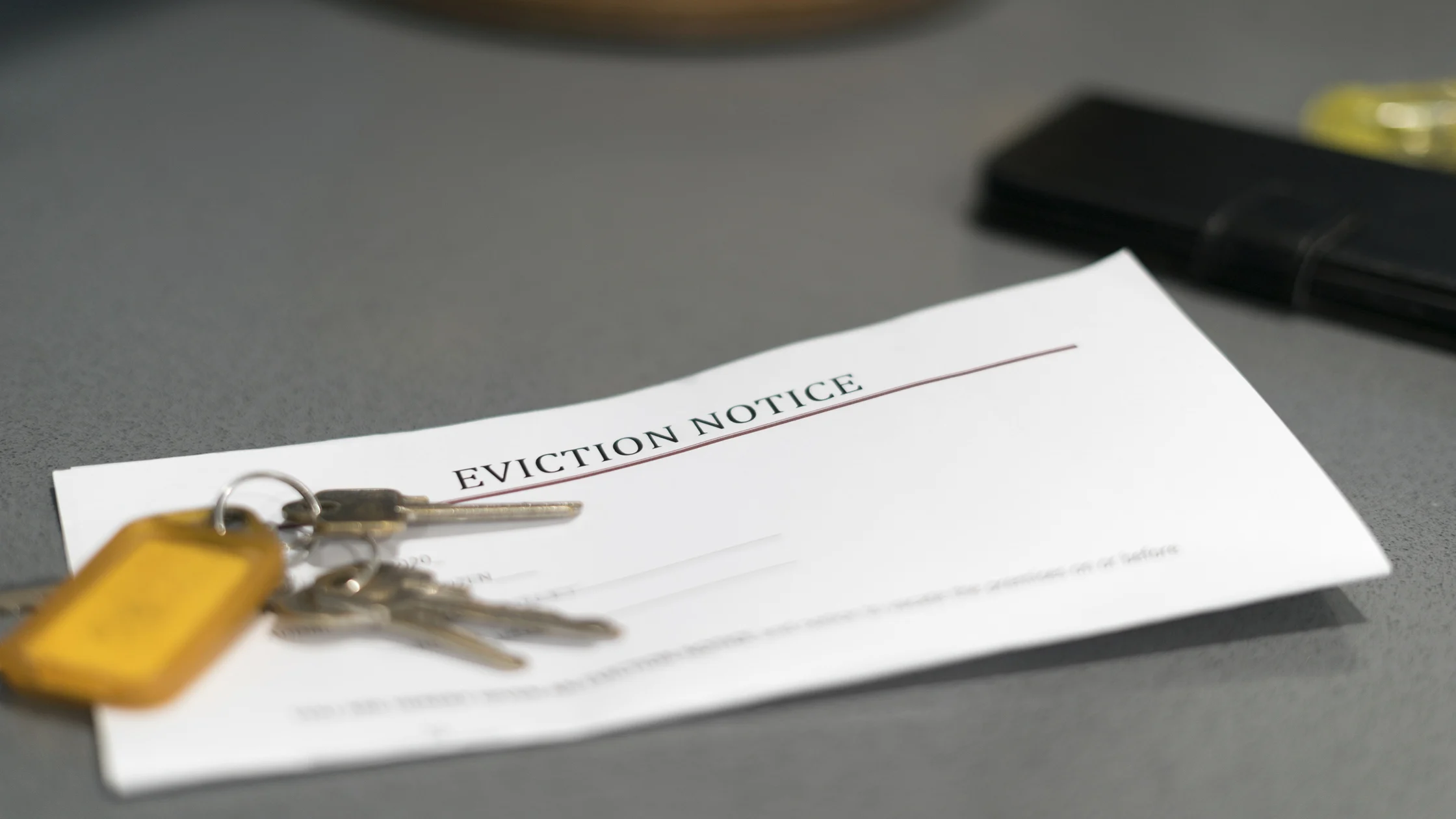
Being a landlord comes with plenty of responsibilities, and that includes navigating uncomfortable territory like evictions. These notices are legal tools that protect your property, set clear expectations, and give tenants a fair chance to correct the issue or move out.
This section will walk you through what eviction notices actually are, why and when they’re needed, the most common mistakes landlords make, and how to choose the right notice for each situation.
What Is an Eviction Notice?
An eviction notice is a formal, written notice that you give to a tenant to let them know they need to either fix a problem or leave your property. That problem could be unpaid rent, a lease violation, or simply the end of their tenancy.
There are different types of eviction notices, and they vary depending on what the tenant did (or didn’t do). Some give tenants a chance to make things right. Others are more final and tell the tenant to move out regardless of whether they fix anything.
These notices also have to follow local rules. The days of notice you’re required to give and how the notice must be delivered need to be included.
As for the cost, an eviction notice itself is often just the price of printing or certified mailing, which typically ranges from $5 to $20. However, if you choose to hire a lawyer or use a professional service to prepare or serve the notice, costs can be higher.
When and Why Is an Eviction Notice Necessary?
So, when do you actually need to serve an eviction notice? Honestly, most landlords try to avoid it. You probably don’t want to start down the eviction path unless you’ve already tried talking things through. But sometimes, things get to a point where a friendly conversation won’t cut it anymore.
- Late or unpaid rent: Probably the number-one reason. If a tenant misses rent and doesn’t respond to reminders, a Pay or Quit Notice gives them one last chance.
- Violation of lease terms: This could be having pets when they’re not allowed, damaging the property, causing disturbances, or hosting long-term guests who aren't on the lease.
- Illegal activity: If you suspect drug use, violence, or criminal behavior, most states allow for faster eviction with an Unconditional Quit Notice.
- End of lease or no-cause termination: In month-to-month rentals, you can usually end the lease for any legal reason as long as you give proper notice
- You want the unit back: Maybe you want to renovate, sell the property, or move in yourself.
Whatever the reason, serving the right type of eviction notice is how you protect yourself legally.
Common Mistakes Landlords Make with Eviction Notices
Even experienced landlords run into trouble with eviction notices. It’s one of those areas where small missteps can have big consequences.
You should watch out for these pitfalls:
- Choosing the wrong notice type for the issue, like sending a Pay or Quit when a Cure or Quit is needed.
- Misunderstanding how many days of notice the law requires, some laws count business days, while others count calendar days.
- Serving the notice improperly: Hand-delivery, certified mail, and posting on the door all have rules about when each applies.
- Not keeping proper documentation of the notice delivery and timing creates problems in court.
Note: Take the extra five minutes to double-check that you’re using the right type of eviction notice, with the right deadline, and serving it properly. It’ll save you from many issues.
Common Types of Eviction Notices and When to Use Them (+ Examples)
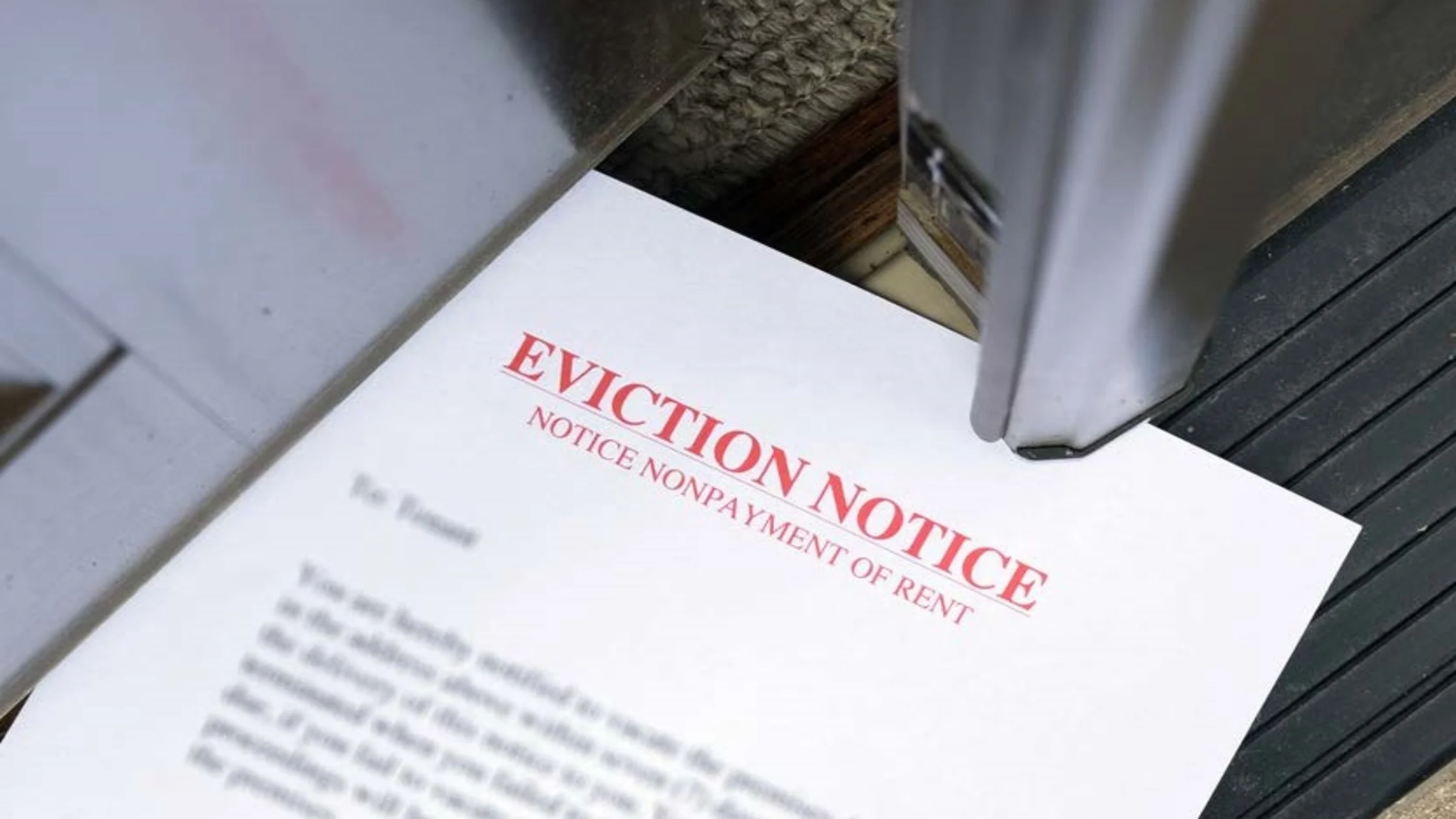
Each notice suits different circumstances, and choosing the right one makes the eviction process smoother and more effective.
3-Day Pay or Quit Notice
When to use it: When rent is overdue.
This is your standard “you’re behind on rent” notice. It gives the tenant three day pay or quit notice. Simple as that. No payment plan, no partial amounts, just pay or go.
“This notice is to inform you that you owe $1,200 in unpaid rent for June. You are required to pay the full amount within 3 calendar days or vacate the property by June 20, 2025.”
3-Day Notice to Perform Covenants or Quit
When to use it: When a tenant breaks a lease term, but you’re willing to let them fix it.
This notice gives them three-day pay or quit notice to correct the issue (like removing an unauthorized pet or cleaning up trash on the property). If they don’t, they’re expected to leave.
“You are in violation of your lease agreement by having an unauthorized pet in the unit. You must remove the pet within 3 days or vacate the premises by June 20, 2025.”
30-Day or 60-Day Notice of Termination
When to use it: For no-cause terminations of a month-to-month tenancy.
Landlords use this notice to end a month-to-month tenancy without claiming tenant fault. Tenants who have stayed less than a year generally require 30-day notice for eviction, while longer-term tenants usually get 60 days. This notice can also apply when the landlord wants to take back the unit for personal use or sale.
“This is your 60-day notice to terminate your month-to-month tenancy. Please vacate by August 17, 2025.”
90-Day Notice of Termination
When to use it: For Section 8 or other subsidized tenants, or in rent-controlled areas with special protections.
Certain tenants, like those in subsidized housing or rent-controlled units, receive longer notices. A 90-day notice typically appears when the landlord plans to end the tenancy due to owner move-in, property sale, or withdrawal from the rental market.
“You are receiving this 90-day notice because the owner will move into the unit. Please vacate the premises by September 15, 2025.”
Looking to avoid eviction notices in Section 8 housing early on? Learn from our tips on how to screen Section 8 tenants effectively!
Unconditional Quit Notice
When to use it: For serious or repeated problems.
This is the strongest eviction notice, demanding immediate tenant departure without the option to fix any issue. This notice suits serious lease violations such as illegal activity, repeated nonpayment, or significant property damage.
“Due to repeated lease violations and nonpayment, your tenancy is terminated. You must vacate within 5 days.”
State-by-State Eviction Notice Durations and Legal References
Currently, each state has its own rules about how much notice landlords need to give tenants. These timeframes cover everything from 3-day pay or quit notices to 90-day termination notices. Some places even have special rules for week-to-week leases or subsidized housing.
Two Common Forms of Eviction: Non-Payment and Lease Violation
Beyond the notice, evictions generally boil down to two main reasons: rent isn’t paid, or tenants break the lease in some way.
Eviction for Non-Payment of Rent
Non-payment is the classic reason for eviction that every landlord faces at some point. The 3-day Pay or Quit Notice is the main tool here, giving tenants a final window to pay what they owe or move out.
Legally, the notice must clearly state the amount due and the deadline for payment or vacating. Serving this notice properly matters a lot, since courts want proof that tenants received it.
Best practices include documenting every step, keeping communication professional, and not accepting partial payments unless your state allows it. The goal is a clear, legally defensible paper trail that shows you gave tenants a fair chance before escalating the issue.
Eviction for Lease Violations
When tenants break lease terms (bringing in unauthorized pets, causing loud disturbances, or damaging property), landlords turn to different types of notices in law like the 3-Day Notice to Perform Covenants or Quit, or in serious cases, the Unconditional Quit Notice.
This process requires clear identification of the violation and a set timeframe for correcting it (usually three days). The Unconditional Quit Notice gives no chance to fix things and demands immediate move-out, typically reserved for severe or repeated problems.
On the legal side, documenting violations thoroughly, following your lease wording, and understanding your state’s rules for notice and service keep the eviction enforceable.
Everything to Know About Writing and Serving an Eviction Notice Legally

The notice has to include specific information and be delivered correctly to hold up in court.
Key Elements to Include in an Eviction Notice
An eviction notice needs clear details to avoid confusion and legal challenges. While writing your eviction, it should clearly state:
- The tenant’s full name and rental address
- The date the notice is served
- The specific reason for eviction (unpaid rent, lease violation, lease termination)
- The exact amount owed (for non-payment notices)
- The time period tenants have to respond or move out
- Instructions on what the tenant must do to avoid eviction
- Your name and contact info as the landlord or property manager
Acceptable Methods to Serve a Notice
Different states have different rules about how eviction notices reach tenants. Common methods are:
- Personal delivery to the tenant or someone at the rental unit
- Posting the notice on the tenant’s door when no one answers
- Mailing the notice via certified or regular mail
Some places require a combination of these methods to be legally valid. Keeping detailed records of how and when you served the notice protects you later.
Tips to Stay Compliant and Avoid Legal Pitfalls
Staying on the right side of eviction laws means attention to detail and consistency. Therefore, always remember:
- Double-check your state and local laws before preparing any notice
- Use clear, professional language. Avoid threats or emotional language
- Always date your notices and keep copies
- Track delivery carefully, photos of posted notices and mail receipts help
- Resist the urge to accept “partial” rent payments after serving a Pay or Quit without knowing your legal options
- Don’t rush to court before the notice period expires
Following these steps keeps your eviction process straightforward.
Alternatives to Eviction: How to Avoid the Need for Notices
Before jumping straight to eviction notices, exploring alternatives can keep relationships intact and prevent the hassle of court.
Mediation and Communication
Talking things through often works wonders. Sitting down with your tenant can uncover issues behind missed rent or lease violations. Sometimes tenants face temporary financial struggles or misunderstandings about lease rules.
Mediation takes that a step further by involving a neutral third party to help both sides find common ground. Many communities offer free or low-cost mediation services specifically for landlord-tenant disputes. This process encourages cooperation and can lead to win-win solutions without eviction.
Being open, listening, and showing flexibility early on helps build trust. Tenants who feel heard are often more willing to resolve issues without the stress of formal eviction.
Rent Payment Plans and Other Options
When rent is the main problem, offering a payment plan can change the whole situation. Instead of insisting on full payment immediately, work out a schedule that allows the tenant to catch up gradually while continuing to pay current rent.
Other options to consider include:
- Partial rent acceptance: Some states let landlords accept partial payments without waiving the right to evict, but check your laws carefully.
- Temporary rent reductions: Lowering rent temporarily during tough times can keep tenants afloat and reduce turnover.
- Referrals to assistance programs: Many cities and nonprofits offer rental assistance or emergency funds to help struggling tenants.
Landlords who find creative solutions often save time, court fees, and the hassle of finding new tenants.
Conclusion
Overall, the eviction process can be tricky. Getting familiar with the types of eviction notices can help you avoid common pitfalls and stay on solid legal ground. Approach each case thoughtfully, and keep in mind that sometimes alternatives to eviction can be just as effective in resolving problems. For more insights and practical tips on managing rentals legally and effectively, check out our LeaseRunner blog!
FAQs
Q1. What are the most common types of eviction notices?
The most common eviction notices landlords use include the 3-Day Pay or Quit Notice (for unpaid rent), 3-Day Notice to Perform Covenants or Quit (for lease violations), 30- or 60-Day Notice of Termination (to end month-to-month tenancies), and the Unconditional Quit Notice (for serious violations).
Q2. How long does a landlord have to give notice before starting an eviction?
Notice periods vary by state and the reason for eviction. It could be as short as 3 days for unpaid rent or as long as 90 days for lease termination in certain cases. Always check local laws to know the exact timelines.
Q3. Can a tenant fix the problem after receiving an eviction notice?
Some notices, like the 3-Day Pay or Quit or the 3-Day Notice to Perform Covenants or Quit, give tenants a chance to resolve the issue within the specified time. Others, like an Unconditional Quit Notice, require immediate move-out with no chance to cure.
